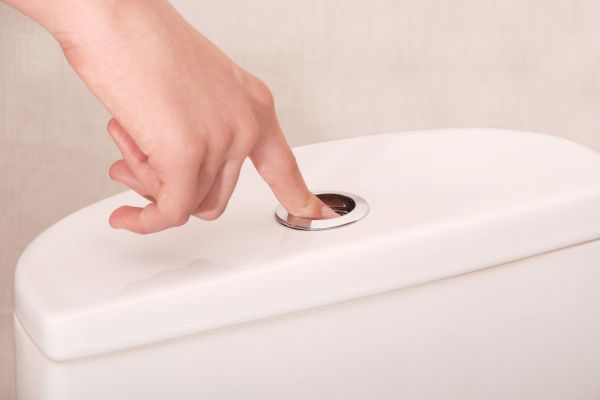Few things are more frustrating than discovering your toilet not flushing properly. Whether it’s a weak flush, a toilet bowl that refuses to empty completely, or water rising alarmingly high before slowly draining, the issue can disrupt your entire day. Toilets are a vital part of any home, and when they malfunction, it’s natural to want a quick and lasting solution. Understanding why your toilet is not flushing properly is the first step toward fixing the problem efficiently.
Common Reasons Your Toilet Is Not Flushing Properly
When your toilet starts acting up, the cause often lies in one of several typical issues. A partial clog in the trap or drainpipe is among the most frequent culprits. Even if the water eventually drains, a buildup of debris can weaken the flush, making it seem sluggish or incomplete. Similarly, mineral deposits or hard water scale inside the rim jets can block water flow, reducing flushing power without any visible blockage.
A malfunctioning flapper valve is another common reason toilets fail to flush properly. This rubber component inside the tank controls water release during a flush. If it becomes worn, misaligned, or fails to seal tightly, it can prevent the proper amount of water from entering the bowl. Likewise, a problem with the fill valve or float mechanism may stop the tank from filling adequately, leaving insufficient water for a strong flush.
How Water Level and Tank Issues Affect Flushing
A toilet tank that does not fill to the correct level will lead to poor flushing performance. The water level inside the tank should sit about an inch below the top of the overflow tube. If the water level is too low, there isn’t enough force to push waste through the drainpipe. Adjusting the float or replacing a faulty fill valve can often resolve this problem and restore normal flushing.
Sediment buildup in the tank can also interfere with the mechanisms inside. Over time, minerals from hard water may settle around the moving parts, making them stiff or preventing them from sealing properly. Cleaning the tank and ensuring all components are functioning smoothly can go a long way toward fixing a toilet that’s not flushing properly.
Could It Be a Plumbing Vent or Drain Line Issue?
If your toilet still refuses to flush properly after inspecting the tank and bowl, the problem may extend beyond the toilet itself. Plumbing vents, designed to equalize air pressure in the pipes, can become blocked by debris, bird nests, or even snow. A blocked vent causes slow drainage and weak flushing since air cannot flow freely through the system.
In more severe cases, an obstruction in the main sewer line may be the root cause. Tree roots, grease buildup, or collapsed pipes can lead to widespread drainage issues throughout the home. If multiple drains are slow or gurgling, or if you notice sewage backing up, it’s time to call a professional plumber.
Simple Fixes for a Toilet Not Flushing Properly
For minor issues, homeowners can often restore proper flushing without professional help. Start by checking the flapper valve for wear or misalignment and replace it if necessary. Ensure the chain connecting the flush lever to the flapper has the right tension—not too slack and not too tight.
Next, examine the rim jets under the toilet bowl’s edge. Cleaning them with a stiff brush or a solution of vinegar can help clear mineral deposits and improve water flow. If the water level in the tank is low, adjusting the float arm or replacing a worn-out fill valve may solve the problem.
For a suspected partial clog, a plunger or toilet auger may be enough to dislodge the obstruction. However, avoid using harsh chemical drain cleaners, as they can damage the porcelain and harm your plumbing system.
When to Call a Professional Plumber
While many toilet flushing problems have simple solutions, certain signs indicate the need for professional help. Persistent clogs, gurgling sounds from other drains, or water backing up in sinks and tubs suggest a deeper issue in your plumbing system. A licensed plumber can diagnose and fix venting problems or sewer line blockages that are beyond the reach of DIY efforts.
Additionally, if you have an older toilet that struggles with flushing performance despite repeated repairs, it may be time to consider replacing it with a modern, water-efficient model. Today’s toilets are designed to use less water while delivering a powerful flush, helping you save on utility bills and prevent recurring issues.
Preventing Future Flushing Problems
Once you’ve fixed your toilet, preventing future problems should be a priority. Avoid flushing items like wipes, feminine hygiene products, or excessive toilet paper, as these can easily lead to clogs. Regularly cleaning the tank and bowl also helps prevent mineral buildup that can weaken flushing performance over time.
If you live in an area with hard water, consider installing a water softener to reduce mineral deposits in your plumbing system. Routine plumbing inspections can also catch small issues before they become major headaches.
A Toilet That Flushes Properly Every Time
Dealing with a toilet not flushing properly is inconvenient, but most problems can be resolved with a little investigation and care. From adjusting the tank’s water level to clearing rim jets or replacing worn parts, many fixes are straightforward and inexpensive. However, if the issue lies deeper in your plumbing system, professional assistance may be the safest and most effective solution.
By addressing the problem promptly and adopting preventive habits, you can ensure your toilet remains reliable and efficient for years to come. After all, a properly functioning toilet is essential to the comfort and hygiene of your home.

